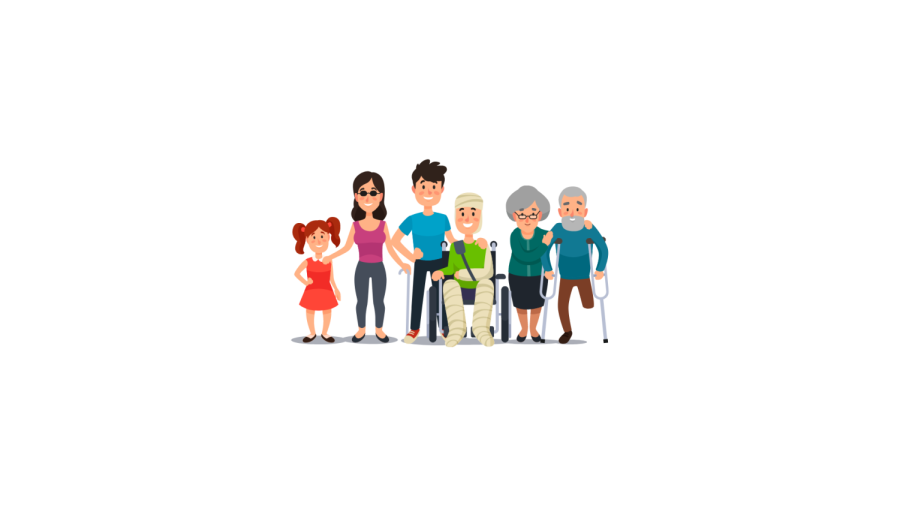March is National Disability Awareness Month, and two of the University’s resources are the Disability Resource Center (DRC), which provides accommodations and awareness of disabilities on campus, and the student-run Disabled Student Cultural Center (DSCC), which fosters an environment of inclusivity, according to the DRC and DSCC.
A disability is any state of the body or mind that makes it more challenging for the individual with the condition to do certain tasks and engage with the external world, according to the Centers for Disease Control and Prevention (CDC). One in four adults in the United States has some type of disability, according to the CDC.
At the University of Minnesota, barriers and inequities in transportation, academics and accommodations exist for disabled students, according to University student Isabel Laderman. Though many resources are available and actively working toward progress, some gaps still exist.
A call for action: increased accessibility on campus
Laderman, a second-year student, has Ehlers-Danlos Syndrome, a disability that targets connective tissues and results in loose joints. Her body produces the protein collagen incorrectly, resulting in chronic pain.
Laderman said she currently has an ankle injury that has been intensified by her syndrome, which has led to immobility and the need for either a cane or an electronic scooter for everyday use that the DRC provided.
“The campus infrastructure is not accessible,” Laderman said. “Even with a smaller scooter, it’s impossible to turn around in the elevator without getting off the scooter and physically lifting it around, and oftentimes the elevators are at inconvenient places.”
Laderman said a common misconception is that people with disabilities do not exercise; she has to exercise every day to keep her strength so she can walk. She said it is important to have accessibility in gyms and working elevators that extend to all floors.
In terms of transportation, Laderman said all steps of the process matter, including getting there, arriving and the ride itself. She said the University should have more accommodative structures in place.
“The bus stops have anti-homeless infrastructure, so there are no benches that you can sit down on,” Laderman said. “I would have to stand after I arrived, while additionally walking several blocks to get there.”
Laderman said while using a scooter, she has had experiences of campus bus drivers failing to lower the wheelchair ramp to let her on. She said that made it hard for her to board, especially the 121 bus, which was typically very crowded.
Paratransit rides operate on the Twin Cities campus for anyone unable to use fixed transit and needs special services that are curb-to-curb, according to the Parking and Transportation Services website.
“Paratransit is accessible in its infrastructure and accommodative shape, and the drivers are wonderful people,” Laderman said. “ But, I have to book two weeks in advance if I want to make sure I can get my ride.”
Laderman said the University has also tried to ban her from using paratransit for things that she felt were not her fault, such as having to cancel rides due to external changes in her schedule. She said she believes it would be helpful to add more vans to campus to allow for more flexibility in scheduling and make service more accessible.
The Disability Resource Center: improving access for students and faculty with disabilities
Emily Ehlinger, the DRC’s senior manager in the Student Access Unit, said she works specifically with student accommodations and has been with the center for eight years.
“We are committed to enhancing accessibility and inclusion through individualized accommodations while also partnering with the broader University community as a part of how we build awareness and support around disability,” Ehlinger said.
Ehlinger said the DRC facilitates outreach and training with departments and different groups in units across the University. She said the staff aims to develop liaison relationships with organizations such as the DSCC to collaborate in implementing their shared mission of advancing accessibility.
“Accommodations are a core part of how we create a more equitable environment for disabled students,” Ehlinger said. “We look at impacts and barriers that might pop up in certain environments while also looking at skills building in tandem with these accommodations in order to build strategies and additional support.”
The Disabled Cultural Student Center: a safe space for all backgrounds and abilities
The DSCC works toward building a strong community of students with disabilities, increasing disability awareness and promoting advocacy through events, according to the center’s website. The center is located on Coffman Union’s second floor, is open from 11 a.m. to 7 p.m. Monday through Friday and provides a sensory room for those who want to calm themselves.
DSCC Vice President and University student, Matthew Croft, said the DSCC’s mission has a “dual mandate,” caring about building a community with students who have disabilities while also furthering more serious conversations surrounding disability, solidarity and awareness on campus.
“Our physical space is a key part of the services that we provide,” Croft said. “It’s a place to decompress, play games, meditate, take naps and even use our sensory room.”
Croft said the DSCC puts an emphasis on an open structure, which allows all members to participate in the way they feel most comfortable and content. He said roles in the organization are not fixed or defined, and events and conversations focus on what is going on within the surrounding community.
“Participation is not tied to their intrinsic worth,” Croft said. “Everyone can be a scholar and a member that is seen as an important member of the University community.”



















